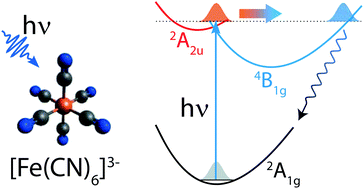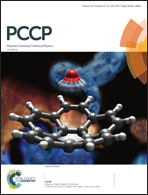Light-induced relaxation dynamics of the ferricyanide ion revisited by ultrafast XUV photoelectron spectroscopy†
Abstract
Photoinduced charge transfer in transition-metal coordination complexes plays a prominent role in photosynthesis and is fundamental for light-harvesting processes in catalytic materials. However, revealing the relaxation pathways of charge separation remains a very challenging task because of the complexity of relaxation channels and ultrashort time scales. Here, we employ ultrafast XUV photoemission spectroscopy to monitor fine mechanistic details of the electron dynamics following optical ligand-to-metal charge-transfer excitation of ferricyanide in aqueous solution. XUV probe light with a time resolution of 100 fs, in combination with density functional theory employing the Dyson orbital formalism, enabled us to decipher the primary and subsequently populated electronic states involved in the relaxation, as well as their energetics on sub-picosecond timescales. We find strong evidence for the spin crossover followed by geometrical distortions due to vibronic interactions (Jahn–Teller effect) in the excited electronic states, rather than localization/delocalization dynamics, as suggested previously.

- This article is part of the themed collection: 2017 PCCP HOT Articles


 Please wait while we load your content...
Please wait while we load your content...